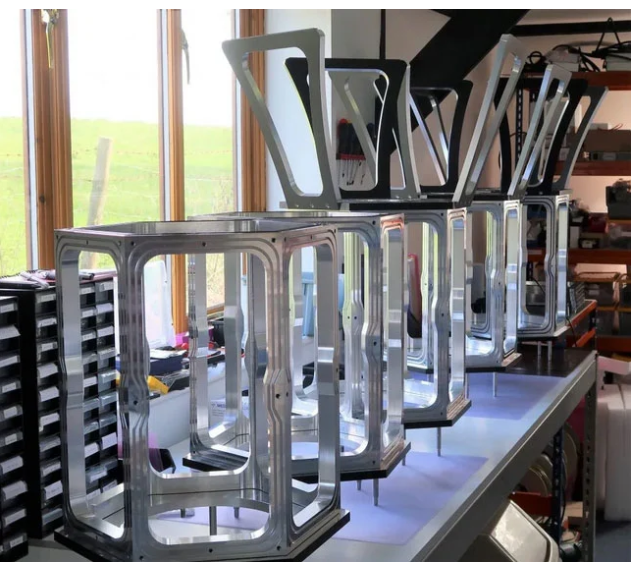Written by Matt Clancy
Published on
Applications of Thin Film Coatings in Various Fields
Are you curious about the many different thin film applications in today’s world? You may not realise it, but thin films play a starring role in many of the creature comforts we’ve come to rely on in our everyday life, from the mirror in your bathroom to the mobile phone in your pocket.
However, thin films aren’t new; instead, they’ve been around for a long time. The earliest documented instances date over 5,000 years ago to the Ancient Egyptians, who gilded statues and artefacts with decorative coatings of gold using a chemi-mechanical technique.
At Korvus Technology, we know how critical thin-film technology is to our world. We have over 20 years of experience developing, creating, and installing thin-film deposition systems, supplying a wide range of organisations, brands, universities and research centres.
Keep reading to learn more about thin films, including structure, morphology, properties, and applications.
A Brief Overview of Thin Film Applications

Thin-film measurements can range from a single atom to several micrometres. During the thin-film deposition process, we can deposit a single layer of target material onto the substrate, which can enhance certain physical and chemical properties that aren’t present in bulk materials of the same chemical composition. [1,8]
Some example thin-film deposition techniques include chemical vapour deposition (CVD) and physical vapour deposition (PVD). [5] PVD involves vaporising the target material, which condenses on the substrate surface, forming a deposited film. PVD deposition techniques include a thermal evaporation process (aka vacuum evaporation), sputtering, and ion plating. [5]
CVD triggers a chemical reaction, creating a thin target material layer on the substrate surface. Standard methods include spin coating, laser CVD, and thermal CVD. [5] CVD and PVD methods require complex equipment — i.e., a deposition system with a vacuum chamber.
Thin Film Morphology and Structure
Thin-film microstructure and properties depend on the growth mechanism, deposition parameters (i.e., low temperature or vapour pressure) and techniques we employ during the manufacturing process. Microstructures consist of three types:
- Amorphous: Forms a lattice that lacks long-range crystalline structures
- Polycrystalline: Forms nano/micro crystallites of varying sizes
- Epitaxial thin films: Forms solid crystalline film with latticework [1]
Thin film applications depend heavily on thin-film morphology, and that depends on various factors. It includes deposition techniques and atom adsorption during film growth. Also, the type of material and the flux of vapour and atoms impact the final morphology, growth structure, and film thickness. For example, thin films grown via vapour deposition often feature cylindrical structures. [1]
Properties of Thin Films
There are several properties that are crucial for modern thin film applications. The manufacturing process must observe certain conditions and take certain precautions, so it’s not harming the thin film applications afterwards.
When depositing thin films onto a substrate, essential considerations include characterisation techniques and long-term performance of the enhanced properties. Thin-film coatings behave differently from bulk material, and residual stress during deposition can alter the film’s properties, like causing defects in the crystalline structure or epitaxial growth. [1,4]
Such stressors and the film’s microstructure can negatively affect its mechanical properties, like hardness and yield. [3] Substrate and film type (i.e., metallic films, insulators, semiconductors), purity, and scaling alter electrical properties, such as reducing conductivity. [4] Finally, the connection between deposition parameters and microstructure growths influences a thin film’s optical properties. [1]
Applications of Thin Film Technology in Various Industries

Thin-film technologies are prevalent in virtually every industrial sector. For example, this technology is essential for fabricating active and passive devices, complex optical systems, and even protective coatings for tools. Read on as we explore nine typical thin film applications, including thin film batteries, optics, magnetics, resistors, solar cells, and many more.
Thin-Film Interference Applications
Among the modern thin film applications, thin film interference is often one of the first that comes to mind.
Thin-film interference is an optical illusion caused by the interaction and reflection of light on the top and bottom surfaces of a film [3]. This phenomenon occurs when a light ray partially reflects off the surface of a thin film. The remaining light passes through, reflecting off the film’s bottom and then interfering with the first ray on the top. [3]
The most common application of thin-film interference is optical devices, including lenses and mirrors. It’s also present on the wings of certain butterflies, on soap bubbles, and as a security feature on money, credit cards, driver’s licenses, etc. [3]
Zinc Oxide-Based Thin-Film Applications
ZnO thin film applications (zinc oxide) are commonplace in several industries and devices, including thermal, optical, magnetic, and electrical. However, primary uses of ZnO thin films include semiconductor devices and coatings. [8] ZnO films are also suitable for these applications:
- Displays
- Solar cells
- LED
- OLED
- Gas sensors
- Lasers
- Biosensors
- Photodetectors
ZnO is also physically and chemically stable, readily available, inexpensive, and has excellent conductivity. For those reasons, it’s a popular alternative to other materials in the thin film sector, like indium tin oxide or gallium nitride. [8]
Thin Film Resistor Applications
Thin-film resistors are widespread in modern technology and crucial among thin film applications. Its applications range from radio receivers and circuit boards to computers and radiofrequency devices. Additional applications include monitors, wireless routers, Bluetooth modules, cell phone receivers, and electronics, where they’re invaluable.
For example, nickel-chromium alloy-embedded resistors are vital for manufacturing smaller, thinner electronic devices due to their high resistivity [9]. Researchers discovered that embedding these resistors into a printed wiring board improves electrical performance and reliability while increasing device functionality. They can also enhance temperature stability by infusing the alloy with small amounts of aluminium and silicon [9].
Magnetic Thin Film Applications
Magnetic thin films are essential components of many devices, including electronics, data storage, radio-frequency identification, microwave devices, displays, circuit boards, and optoelectronics. Beyond that, they’re critical for fabricating wearable electronics, including biomedical sensors. By far, this is one of the most common uses that drive thin film applications to be so important. [7]
Magnetic films are ideal for use in those industries due to their lightweight, portable size, flexible substrates, and biocompatibility. These properties make them highly suitable for photonic, spintronic, and recording devices. [7] Sensors containing magnetic films that use a flexible substrate (instead of a flat substrate) during deposition may even have the potential to detect the magnetic field of living organisms. [7]
Optical Coating
Optical thin films have firm roots in today’s modern technologies. Standard applications include optical coatings and optoelectronics, which have an impressive range of uses. For example, manufacturers can create optoelectronic thin-film chips (semiconductors) using molecular beam epitaxy. MBE involves depositing a single atom at a time onto the substrate to create epitaxial films. [1,5,6]
A highly pure, high vacuum environment is necessary to fabricate optical coatings due to the negative effect impurities can incur in any film, these coatings have numerous uses, including lenses (i.e., glasses, telescopes) and mirrors. The coating itself affects how the optics reflect and convey light; for example, we can create anti-reflective coatings or the opposite, highly reflective coatings. [6]
Polymer Thin Film Applications
Applications for polymer thin films range from solar cells and electronics to healthcare and memory chips. Advancements in chemical deposition methods (CVD) allow greater control over polymer film coatings, including coating thickness and conformity. Certain chemical reactions allow for solvent-free fabrication, eliminating the risk of adverse reactions to human tissue. [2]
Now, there are “smart membranes,” which change permeability or selectivity based on environmental stimuli, like low temperatures, very low pressures or pH changes. [2] These polymer thin film coatings have many biomedical applications, including drug delivery systems, tissue engineering and biosensor creation. [1]
Thin-Film Battery Applications
Have you ever heard of a lithium-ion battery? These rechargeable batteries power many of the world’s mobile phones and laptops. The technology has grown exponentially in the last decade, but the integration of thin films has advanced it further than ever before.
Now, thin-film batteries are the superior choice over lithium-ion. They’re thinner, lighter, and denser without sacrificing voltage or current. [6] Their narrower proportions are ideal for use in complex electronics, like ultra-thin laptops. Another application for thin-film batteries is in the healthcare industry, where they power implantable medical devices. [6]
Thin-Film Coating Applications
Thin-film coatings provide many practical uses in various industries and technologies. During deposition, manufacturers use coating techniques to improve the chemical and mechanical properties of target materials. Common examples include anti-reflective coatings, anti-ultraviolet or infrared coatings, anti-scratch coatings, and lens polarisation. [1]
Additional uses for film coatings include:
- Anti-corrosion coatings: Reduce rust and degradation in pipes, engine parts, bearings, etc.
- Hard coatings: Increase the durability of cutting tools while reducing friction
- Architectural glazing: Improve energy efficiency and lower utility costs in offices and skyscrapers [1]
Thin-Film Solar Cells Applications
Thin-film solar cells are invaluable to the solar energy sector, providing clean, low-cost energy generation. The two primary technologies are thermal energy and photovoltaic systems. [1] At first, solar cell technology used amorphous silicon thin films. However, now the standard is copper indium gallium selenide, which has greater stability and higher efficiency (around 23%). [1]
Thin-film solar cells are also prevalent in the solar energy sector because their absorber layer has a high absorption coefficient. That allows for a considerable reduction in cost and material thickness while increasing conversion efficiency. [1]

Final Thoughts on Thin Film Applications
Thin-film applications are so numerous in everyday life that it would be difficult to find an industry that doesn’t rely on this advanced technology. They have practical uses in almost every sector, from healthcare and memory chips to electronics and solar energy.
At Korvus Technology, we have a broad customer base of global brands and organisations that rely on our innovative solutions, including thin-film deposition systems, accessories, and instruments. Do you want to learn even more? Keep browsing the Korvus Technology website to read additional informative blog posts about this fascinating technology.
References
[1] Acosta, E., & Ares, A. E. (2021). Thin Films/Properties and Applications (Revised ed.). https://doi.org/10.5772/intechopen.87838
[2] Khlyustova, A., Cheng, Y., & Yang, R. (2020). Vapor-deposited functional polymer thin films in biological applications. Journal of materials chemistry. B, 8(31), 6588–6609. https://doi.org/10.1039/d0tb00681e
[3] Ling, S. J., Sanny, J., & Moebs, W. (n.d.). University Physics (Vol. 3). Rice University. https://opentextbc.ca/universityphysicsv3openstax/front-matter/preface/
[4] Ohring, M. (2002). Materials Science of Thin Films. Elsevier Gezondheidszorg. https://www.sciencedirect.com/book/9780125249751/materials-science-of-thin-films
[5] Oluwatosin Abegunde, O., Titilayo Akinlabi, E., Philip Oladijo, O., Akinlabi, S., & Uchenna Ude, A. (2019). Overview of thin film deposition techniques. AIMS Materials Science, 6(2), 174–199. https://doi.org/10.3934/matersci.2019.2.174
[6] Rao, M. C., & Shekhawat, M. S. (2013). A Brief Survey on Basic Properties of Thin Films for Device Application. World Scientific. Retrieved March 18, 2022, from https://www.worldscientific.com/doi/pdf/10.1142/S2010194513010696
[7] Sheng, Ping & Wang, Baomin & Li, Runwei. (2018). Flexible magnetic thin films and devices. Journal of Semiconductors. 39. https://iopscience.iop.org/article/10.1088/1674-4926/39/1/011006
[8] Vyas, S. (2020). A Short Review on Properties and Applications of Zinc Oxide Based Thin Films and Devices : ZnO as a promising material for applications in electronics, optoelectronics, biomedical and sensors. Johnson Matthey Technology Review, 64(2), 202–218. https://doi.org/10.1595/205651320×15694993568524
[9] Wang, J., & Clouser, S. (2001). Thin film embedded resistors. Ticer Technologies Publication, pp.1-6. https://ticertechnologies.com/wp-content/uploads/2015/12/01_ThinFilm.pdfcom

